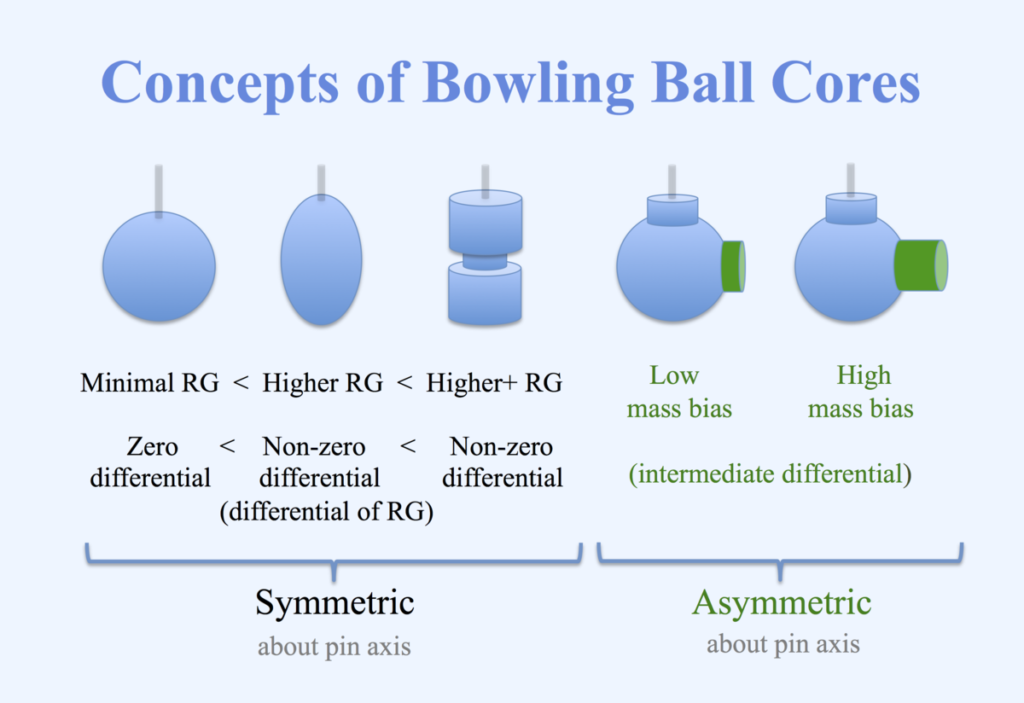We’ve published quite a few articles about bowling ball materials, and shared recommendations for balls with different coverstocks, ranging from plastic to reactive resin.
Today’s post, however, will focus on another part of the ball that can come in different types: the ball’s core.
In particular, there are asymetric and symetric bowling balls. What does this mean and how can you use this distinction to your advantage when selecting a bowling ball?
What Are Asymetrical and Symetrical Bowling Balls?
The definitions can get a bit technical but here is the primary distinction, followed by the more important piece, a discussion about why this matters:
For balls with a symmetrical core, “the RG (radius of gyration) values of the Y (high RG) and Z (intermediate RG) axes of the ball do not differ by more than 5% of the total differential of the ball.”
In contrast, asymmetrical core bowling balls have a “the RG (radius of gyration) values of the Y (high RG) and Z (intermediate RG) axes of the ball differ by more than 5% of the total differential of the ball.” (source)
So what exactly does this mean?
First, RG, or the radius of gyration, is a measure (in inches) of the distance from the axis of rotation “at which the total mass of a body might be concentrated without changing its moment of inertia.”
A ball with a low radius of gyration (RG) will rev up more quickly and easily, which can lead to more ball motion and changes in direction. To give another frequently used term, the difference in RG as measured affects the ball’s “track flare potential”.
One source describes well how this plays out.
With a symmetrical drilled ball, you “will produce a smooth, controllable motion when compared to an asymmetrical ball.”
That asymmetrical ball, on the other hand, “can create more area at the break point and will respond to friction faster at the break point than symmetrical balls.” Among other things, this can produce more hook.
The image below helps illustrate these concepts of symmetric and asymmetric bowling ball cores:

These precise measurements and terms may make more sense to a PhD physicist than even the most advanced of bowlers, but hopefully the diagram and the descriptions of the radius of gyration and how it plays out with symetrical and asymetrical balls is useful to you. While this is not going to the primary consideration to bring with you as you look for the right bowling ball, it’s definitely something to be aware of.


Leave a Reply